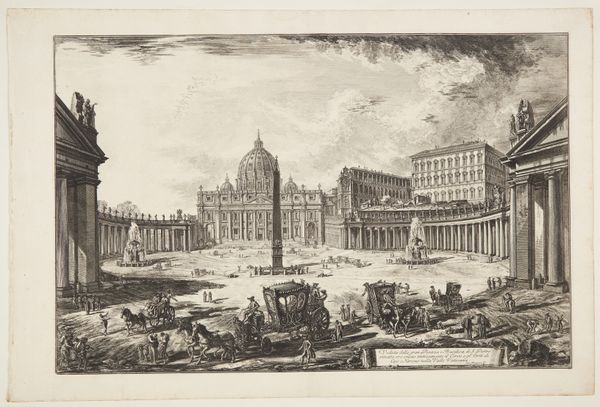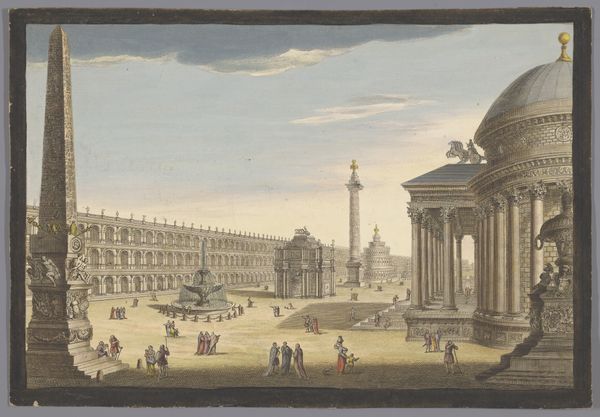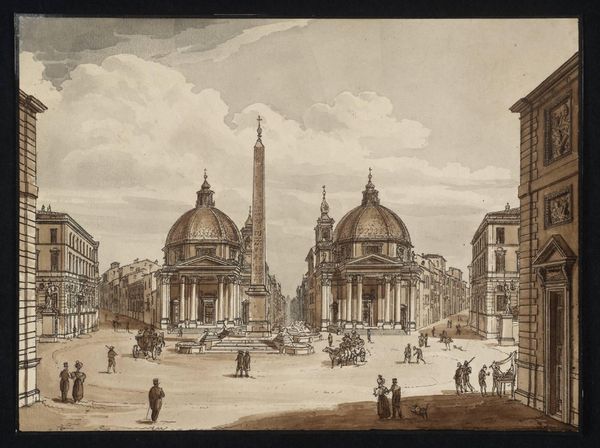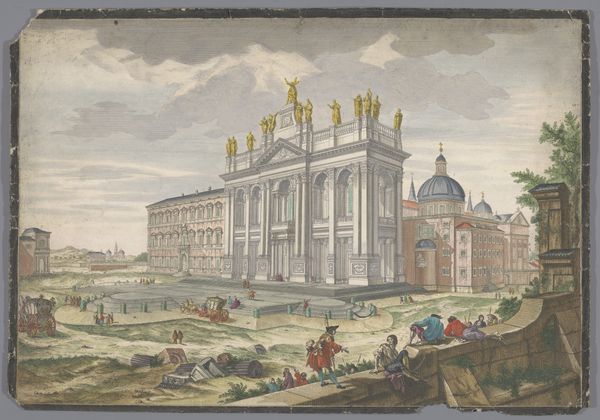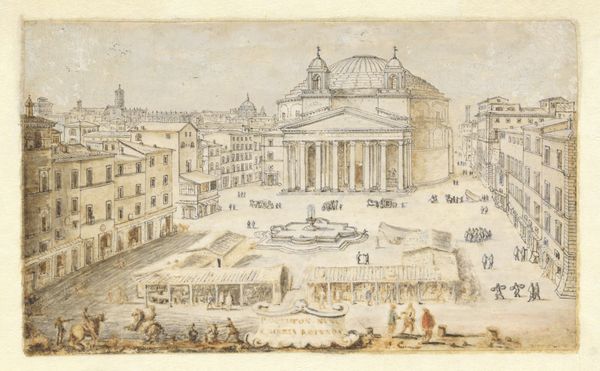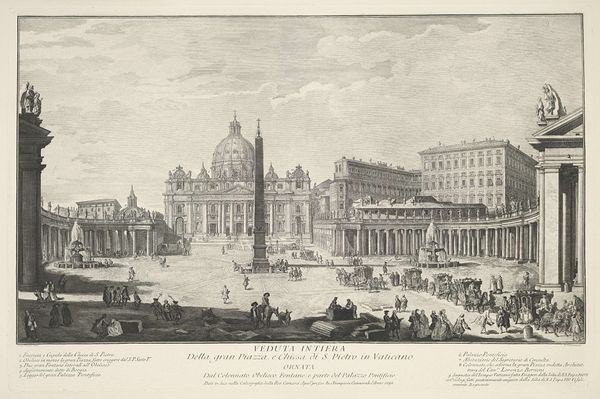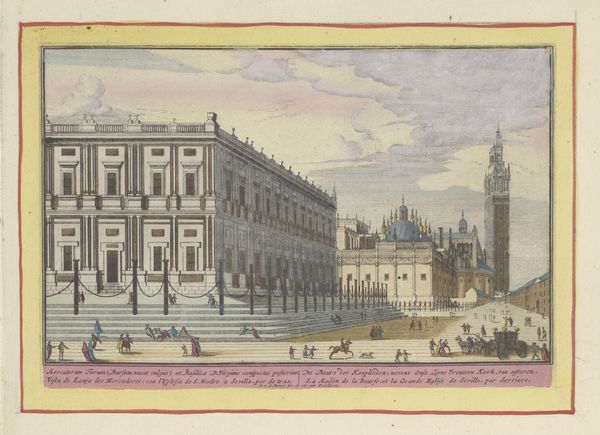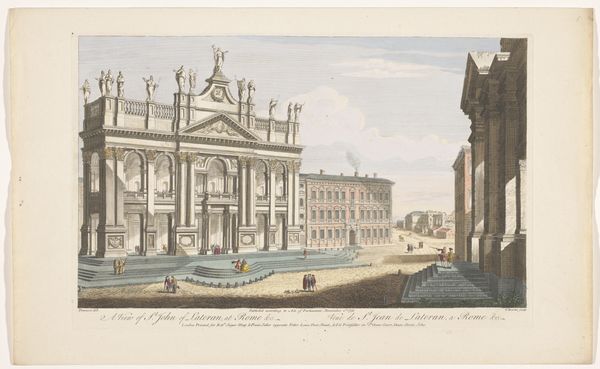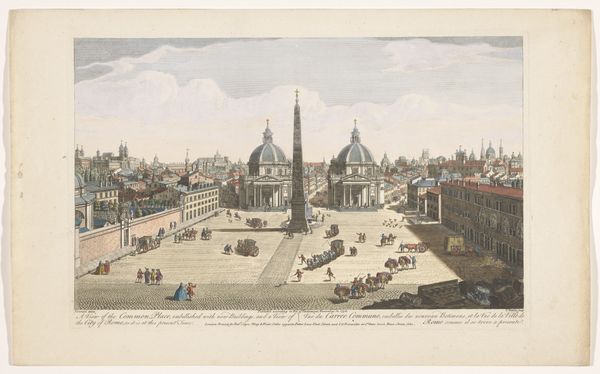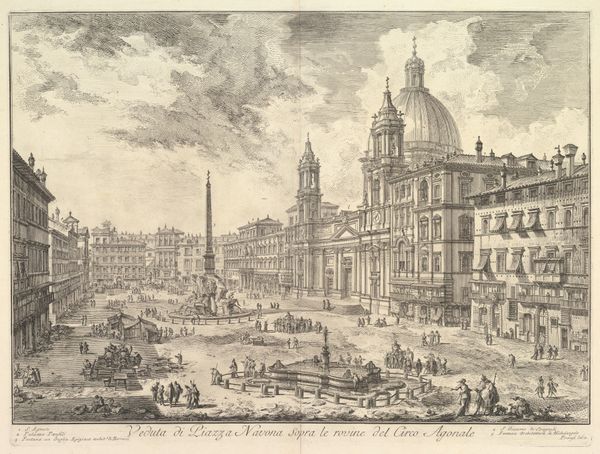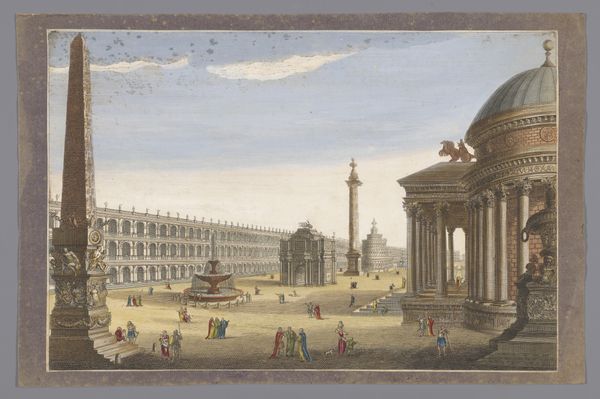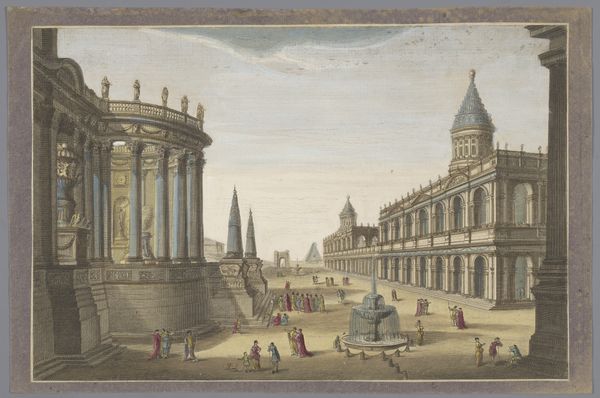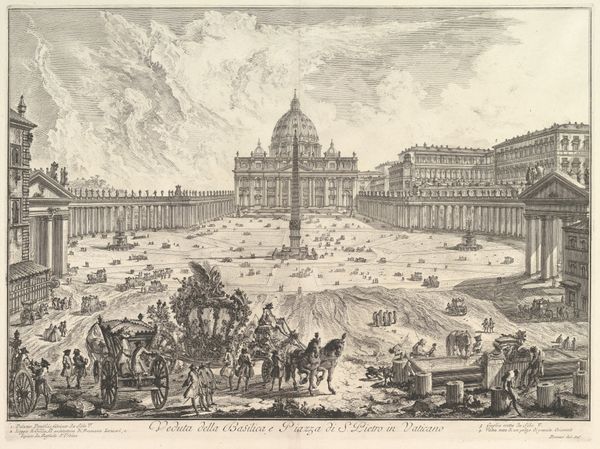
View of Saint Peter's Square and Basilica in Rome c. 1846
0:00
0:00
drawing, watercolor
#
drawing
#
neoclacissism
#
landscape
#
watercolor
#
cityscape
#
history-painting
#
academic-art
#
watercolor
Dimensions: 8 1/4 x 12 1/16 in. (20.96 x 30.64 cm) (sheet)
Copyright: Public Domain
Curator: The scene before us is Ippolito Caffi's "View of Saint Peter's Square and Basilica in Rome," a watercolor drawing from around 1846, now residing here at the Minneapolis Institute of Art. Editor: It has a beautifully ethereal quality; the watercolor almost feels like a memory, or a dream of a place. It is remarkable how delicate and transparent it looks. Curator: Caffi was a master of capturing light and atmosphere. His work here really evokes a specific time and place. What strikes me is how this seemingly simple watercolor engages with the grand tradition of vedute painting – views specifically designed for the Grand Tour. It is both a beautiful cityscape, and a very savvy commercial product meant to remind aristocratic travellers of the sights that they encountered on their trips across Europe. Editor: That’s fascinating! And makes me look at the paper itself. Knowing its market pushes one to reflect about who could purchase this. Considering the context of artistic production in the mid-19th century— the role of artisanal workshops in Venice and Rome that cater to a booming tourist trade – I would say its value comes in part because it reproduces images of cultural importance and renders the aura of this monumental city portable, a commodified memory of leisure. Curator: Absolutely. And how the depiction of people in the drawing provides more insights to the social dynamics surrounding Saint Peter’s. The artist also documents how this sacred place was transformed into a spectacle in this period. Editor: The repetitive columns... the production! It shows that these spaces and artworks were both spiritual and economical. Do you think the watercolor medium helped disseminate images in a faster manner at the time? Curator: Indeed! The accessibility of watercolor as a medium—in terms of both cost and technique—allowed for broader participation in art making, influencing amateur and professional practices alike. Perhaps this allowed the market for views of major European tourist sites to thrive. Editor: So, by examining the materiality and market for these works, we see not only the artistic talent, but the societal desires and forces that shaped artistic production in its time. Curator: Precisely. Caffi’s watercolor provides us not just with a depiction of a place, but with an entry point into understanding artistic and social values. Editor: Well, I for one, appreciate a good souvenir! The ability to reproduce en masse cultural heritage is essential to build an historical imagery. Curator: Agreed, there is a tension between tourism, authenticity and historical context embedded in it that resonates even today.
Comments
No comments
Be the first to comment and join the conversation on the ultimate creative platform.

